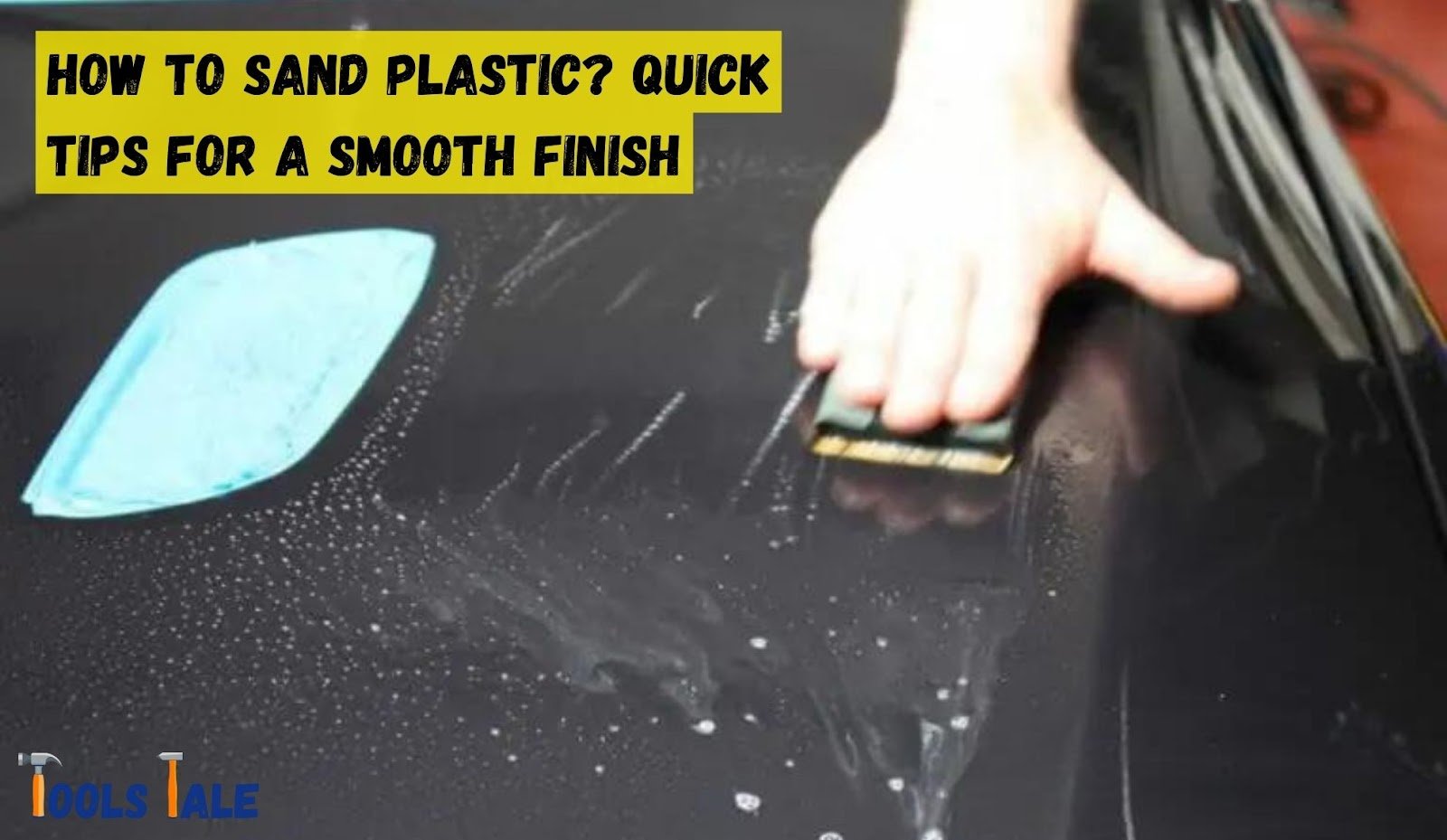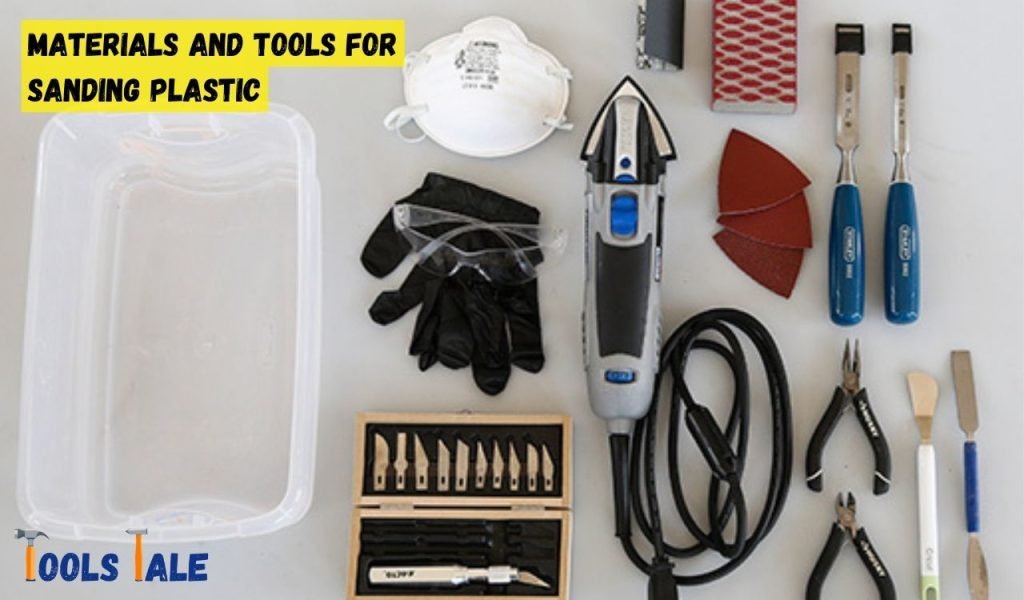Physical Address
304 North Cardinal St.
Dorchester Center, MA 02124
Physical Address
304 North Cardinal St.
Dorchester Center, MA 02124

Wondering how to sand plastic like a pro? Look no further! In this quick guide, we’ll demystify the art of plastic sanding, providing you with the essential tips and techniques to achieve that smooth, flawless finish. Whether you’re a DIY enthusiast, a craftsperson, or just looking to spruce up plastic surfaces, we’ve got you covered.
Say goodbye to rough edges, scratches, and imperfections as we take you on a journey to master the art of sanding plastic. Ready to bring your plastic projects to life? Let’s dive in!
Key Summary: How to Sand Plastic?
Sanding plastic is easy with the right tools. Start with 220-grit sandpaper for light scratches. Use circular motions and gradually switch to finer grits (400, 800) for a smooth finish. Clean debris, prime, and paint for a polished look. Always wear safety gear.
Sanding plastic might seem like a straightforward task, but if you want to achieve a flawless finish, it’s essential to understand the nuances of the process. Whether you’re refinishing a plastic surface, smoothing out rough edges, or preparing it for painting, this comprehensive guide will walk you through the steps in a way that anyone can follow.
Plastic is everywhere, and so are the projects that involve it. From model making to repairing plastic items around the house, understanding the type of plastic you’re working with is crucial. Here are some common plastic project categories:
If you’re into model airplanes, cars, or figurines, chances are you’ll encounter various types of plastic in your kits. Achieving a flawless finish is essential to make your models stand out.
Broken plastic items like toys, kitchen appliances, or furniture can often be salvaged through sanding and proper repair techniques. Learning how to do this can save you money and reduce waste.
Craft enthusiasts frequently use plastic as a medium. Whether you’re making jewelry, ornaments, or decorative items, understanding how to sand plastic will help you refine your creations.

Before we dive into the nitty-gritty of plastic sanding, let’s make sure you have all the materials and tools you need. Gathering the right equipment is crucial for a successful sanding project. Here’s what you’ll require:
With your materials and tools ready, it’s time to delve into the heart of the matter: choosing the perfect sandpaper for plastic.
Selecting the right sandpaper is akin to choosing the right tool for the job. It can make the difference between a smooth, professional finish and a botched attempt. Let’s explore the factors you need to consider when choosing sandpaper for plastic:
Now that you’re armed with the knowledge of materials and tools required and how to choose the perfect sandpaper for plastic, you’re ready to embark on your plastic sanding journey.

Welcome to the heart of plastic sanding—the step-by-step process that will transform your plastic surface from rough to remarkably smooth. Whether you’re working on a DIY project, refurbishing an item, or simply looking to achieve a professional finish, this comprehensive guide will walk you through each stage with precision.
Before diving into sanding, it’s crucial to assess the condition of your plastic surface. Here’s how to get started:
Now that your plastic surface is clean and ready, it’s time to get to work. Begin with coarse grit sandpaper (usually around 80-120 grit) for the initial pass:
With the initial rough sanding complete, it’s time to refine the surface further. Transition to medium-grit sandpaper (typically between 150-220 grit):
For an exceptionally smooth and flawless finish, you have the option of wet sanding:
After completing the sanding process, it’s time for a critical inspection:
While plastic sanding is a DIY-friendly task, it’s essential to prioritize safety throughout the process. Here are some vital safety precautions to keep in mind:
Once you’ve completed the sanding process and followed safety precautions, it’s time to inspect your work and add those finishing touches:
In conclusion, knowing how to sand plastic effectively can make a significant difference in various projects, from refinishing furniture to automotive repairs and DIY crafts. With the right techniques, tools, and safety precautions, you can transform rough and worn plastic surfaces into smooth and rejuvenated masterpieces.
Whether you’re a seasoned DIY enthusiast or just starting, the knowledge gained from this guide empowers you to take on plastic restoration projects with confidence. So, roll up your sleeves, grab your sandpaper, and let your creativity shine as you embark on your plastic sanding journey. With each stroke, you’re one step closer to achieving that smooth, flawless finish that makes your projects truly stand out.
Sanding plastic serves various purposes, such as smoothing rough surfaces, removing imperfections, preparing for painting, and restoring the plastic’s original appearance. It’s a crucial step in enhancing the aesthetics and functionality of plastic materials.
Yes, you can sand most types of plastic surfaces, but the specific plastic and project will determine the sanding techniques and tools required. Always assess the plastic’s condition and choose the appropriate sandpaper and method accordingly.
Selecting the right sandpaper grit is crucial. For rough plastic surfaces or heavy imperfections, start with coarse grit (around 80-120). For smoother plastics or fine finishing, switch to finer grits (150-220 and higher). The grit choice determines the sanding effectiveness and finish quality.
Using regular sandpaper for wet sanding isn’t recommended, as it may disintegrate when exposed to moisture. It’s advisable to use sandpaper specifically designed for wet sanding, which is more durable and effective when wet. This ensures a smoother and more polished finish without compromising the sandpaper’s integrity.
Yes, sandpaper is a primary tool for making plastic smooth. By progressively using finer grits of sandpaper, you can remove imperfections and achieve a polished finish on plastic surfaces.
No, plastic cannot be turned into sand through sanding. Sanding plastic only alters its surface texture and appearance. It doesn’t transform plastic into sand; rather, it refines the plastic’s surface.
Yes, you can sand acrylic plastic, but it requires specific techniques. Use fine-grit sandpaper, work gently, and finish with a polishing compound for optimal results. Acrylic is susceptible to scratching, so caution is essential.
The fastest way to sand depends on the project and your desired outcome. Electric sanders like orbital or belt sanders are generally faster than manual sanding. However, they may not be suitable for delicate or small-scale projects where hand sanding provides more control and precision.